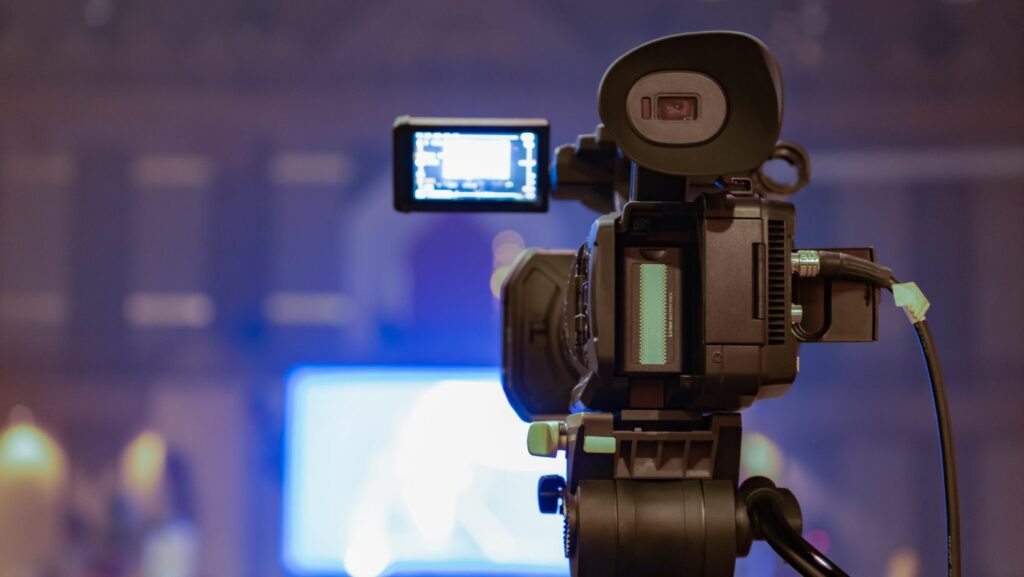What Is Broadcast Media
- Definition and Scope: Broadcast media encompasses television, radio, and online streaming, serving as a vital channel for sharing information and entertainment with a wide audience.
- Historical Evolution: From its inception with the telegraph to modern streaming services, broadcast media has continually adapted to technological advancements and changing consumer preferences.

- Cultural and Societal Role: Broadcast media significantly shapes public opinion, influences culture, and fosters community connections by providing information on current events and societal issues.
- Real-Time Information Dissemination: It enables rapid distribution of news and updates, ensuring audiences stay informed about local and global developments.
- Challenges in the Landscape: Broadcast media faces competition from digital platforms and must navigate regulatory and ethical issues to maintain audience trust and engagement.
Broadcast media plays a crucial role in shaping public opinion and providing information to millions. It encompasses various platforms, including television, radio, and online streaming services, delivering content to audiences in real-time. As technology evolves, so does the landscape of broadcast media, making it more accessible and engaging than ever before.
In a world where instant communication is key, understanding broadcast media is essential. It not only informs but also entertains, influences culture, and fosters community connections. By examining the fundamentals of broadcast media, one can appreciate its impact on society and the way it continues to adapt to changing consumer behaviors.
Understanding Broadcast Media
Broadcast media serves as a critical channel for disseminating information and entertainment to the public through various platforms. Its dynamic nature and continuous evolution reflect shifts in technology and consumer preferences.
Definition of Broadcast Media
Broadcast media refers to the distribution of audio and visual content to a broad audience through electronic communication methods. It encompasses television, radio, and online streaming services. Broadcasting transmits information simultaneously to large groups, unlike other formats such as print media which target individuals or smaller audiences.
- Television: Television combines audio and visual elements, transmitting programs to millions. It includes diverse genres like news, entertainment, documentaries, and sports.
- Radio: Radio broadcasts audio content, delivering news, music, and talk shows. It reaches audiences through AM, FM, and digital platforms, catering to varied interests.
- Online Streaming: Online streaming involves the delivery of content via the internet. Services like Netflix, Hulu, and Spotify provide on-demand access to shows and music, making it increasingly popular among consumers.
- Podcasts: Podcasts are audio programs available through the internet. They cover numerous topics, offering listeners an accessible format for entertainment and education.
- Webinars: Webinars leverage online platforms for live presentations or educational sessions. They interact directly with audiences, often incorporating Q&A segments.
History of Broadcast Media
Broadcast media’s history reflects significant technological advancements and societal changes, influencing how information reaches audiences. This evolution spans decades, shaping public perception and engagement.
Evolution Over the Years
Broadcast media began with the invention of the telegraph in the 19th century, paving the way for early audio transmissions. In the 1920s, commercial radio emerged, with stations like KDKA in Pittsburgh broadcasting news and entertainment. The 1930s welcomed the introduction of television, altering communication dynamics.
The 1950s and 1960s marked widespread television adoption, accompanied by color broadcasts. Cable television appeared in the 1970s, increasing channel variety and consumer choice. The late 1990s saw the rise of digital broadcasting and satellite technology, enhancing picture quality and accessibility.
Online streaming services became prevalent in the 2000s, offering on-demand content and personalized viewing experiences. The advent of social media in the 2010s also transformed content distribution, allowing instant sharing and viewer interaction.
| Year | Milestone |
|---|---|
| 1895 | Nikola Tesla demonstrates wireless communication |
| 1920 | KDKA broadcasts the first commercial radio program |
| 1936 | BBC broadcasts the first public television service |
| 1954 | RCA demonstrates the first color television system |
| 1980 | CNN launches as the first 24-hour news channel |
| 1999 | TiVo introduces digital video recording technology |
| 2005 | YouTube is founded, revolutionizing video sharing |
| 2015 | Streaming services surpass traditional cable subscriptions |
These milestones illustrate broadcast media’s dynamic changes and adaptability, resulting in a rich history that continues to influence modern communication. Each advancement contributed to creating an interconnected global media landscape, shaping how content is consumed today.
Importance of Broadcast Media
Broadcast media plays a crucial role in shaping societal dynamics and influencing culture on a broad scale. Its unique capacity to reach diverse audiences fosters connectivity and shared experiences.
Role in Society and Culture
Broadcast media serves as a primary source of entertainment, education, and information. It shapes public discourse by highlighting current events, issues, and cultural movements. Broadcast platforms, such as television and radio, often reflect societal values, aspirations, and challenges, shaping collective identities. Live events, news coverage, and cultural programming promote community engagement and dialogue, reinforcing social bonds.
Impact on Information Dissemination
Broadcast media enhances information dissemination by rapidly distributing news and updates to a vast audience. Real-time reporting keeps individuals informed about local and global events. The accessibility of broadcast platforms ensures that critical information reaches audiences regardless of location or socioeconomic status. Broadcast media’s influence extends to public service announcements, educational programming, and crisis communication, which can effectively mobilize communities during emergencies to ensure public safety and awareness.
Challenges Facing Broadcast Media
Broadcast media faces several challenges that impact its effectiveness in reaching audiences. These obstacles include competition from digital media and regulatory as well as ethical issues.
Competition with Digital Media
 Broadcast media competes directly with digital platforms, including social media, streaming services, and podcasts. Digital media offers on-demand content, allowing audiences to access information and entertainment at their convenience. For example, platforms like Netflix and YouTube provide diverse programming that captures viewer attention, often leading to decreased traditional TV viewership. The shift towards mobile consumption further intensifies competition, as many audiences prefer using smartphones and tablets for content. This trend forces broadcast media to adapt, often by integrating online resources or creating companion apps to keep up with viewer habits.
Broadcast media competes directly with digital platforms, including social media, streaming services, and podcasts. Digital media offers on-demand content, allowing audiences to access information and entertainment at their convenience. For example, platforms like Netflix and YouTube provide diverse programming that captures viewer attention, often leading to decreased traditional TV viewership. The shift towards mobile consumption further intensifies competition, as many audiences prefer using smartphones and tablets for content. This trend forces broadcast media to adapt, often by integrating online resources or creating companion apps to keep up with viewer habits.
Regulatory and Ethical Issues
Broadcast media encounters regulatory and ethical issues that challenge content delivery and audience trust. Regulatory frameworks, such as the Federal Communications Commission (FCC) guidelines, dictate standards for content, leading to compliance costs that affect operations. Moreover, ethical concerns arise regarding misinformation, advertising practices, and political bias. The rise of fake news poses significant threats, as audiences increasingly question the credibility of broadcast sources. Ensuring transparency and accountability remains crucial for maintaining audience confidence and upholding journalistic integrity in an evolving media landscape.
Vital Component of Modern Communication
Broadcast media remains a vital component of modern communication. Its ability to inform entertain and connect communities is unparalleled. As technology continues to evolve broadcast media adapts to meet the changing needs of its audience.
Despite facing challenges from digital platforms and regulatory issues it still plays a key role in shaping public discourse. Understanding its influence helps individuals navigate the complex media landscape and appreciate the significance of responsible broadcasting. The future of broadcast media will likely be defined by its ability to innovate while maintaining trust and credibility in an increasingly interconnected world.

